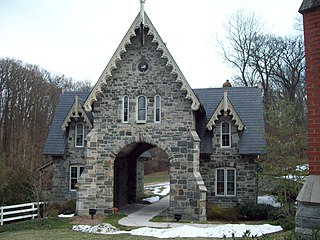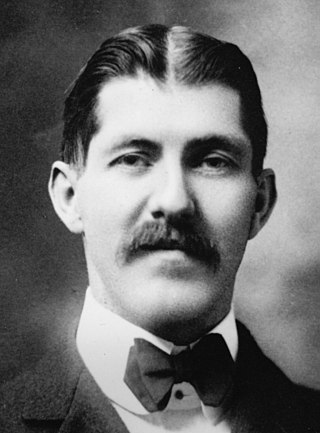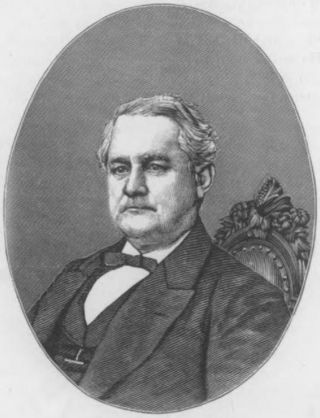The Maryland Institute College of Art (MICA) is a private art and design college in Baltimore, Maryland. Founded in 1826 as the Maryland Institute for the Promotion of the Mechanic Arts, it was regarded as one of the oldest art colleges in the United States.
George Thomas Hine FRIBA was an English architect. His prolific output included new county asylums for Hertfordshire, Lincolnshire, Surrey, East Sussex and Worcestershire, as well as extensive additions to many others.

The Trans-Allegheny Lunatic Asylum, subsequently the Weston State Hospital, was a Kirkbride psychiatric hospital that was operated from 1864 until 1994 by the government of the U.S. state of West Virginia, in the city of Weston. Weston State Hospital got its name in 1913 which was used while patients occupied it, but was changed back to its originally commissioned, unused name, the Trans-Allegheny Lunatic Asylum, after being reopened as a tourist attraction.

The Rosewood Center was an institution for people with developmental disabilities located on Rosewood Lane in Owings Mills, Maryland.

Johns Hopkins Bayview Medical Center is teaching hospital trauma center, neonatal intensive care unit, geriatrics center, and is home to the Johns Hopkins Burn Center, the only adult burn trauma in Maryland, containing about 420 beds. Located in southeast Baltimore City, Maryland, along Eastern Avenue near Bayview Boulevard, it is part of the Johns Hopkins Health System and named after its close proximity to the Chesapeake Bay. Founded in 1773 as an almshouse, it was relocated several times until its now present location in 1866. In 1925, it transitioned into several municipal hospitals, which transferred ownership to Johns Hopkins Hospital in 1984.

St Nicholas Hospital is an NHS psychiatric hospital located in Gosforth, Newcastle upon Tyne, England, UK. The entrance is located on Jubilee Road. The buildings range from Victorian-era to modern facilities and occupies 12 hectares of land. It is managed by Cumbria, Northumberland, Tyne and Wear NHS Foundation Trust.

The Hart–Dole–Inouye Federal Center, formerly the Battle Creek Federal Center, is a complex of federal buildings located in Battle Creek, Michigan.

Blackwell Island Lighthouse, now known as Roosevelt Island Lighthouse, also was known as Welfare Island Lighthouse, is a stone lighthouse built by the government of New York City in 1872. It is within Lighthouse Park at the northern tip of Roosevelt Island in the East River. It was named to the National Register of Historic Places on March 16, 1972 and was designated a New York City Landmark on March 23, 1976.

The Hebrew Orphan Asylum is a historic institutional orphanage and former hospital building located in the Mosher neighborhood of Baltimore, Maryland, United States. It has also been known as West Baltimore General Hospital, Lutheran Hospital of Maryland and is currently being redeveloped by Coppin Heights Community Development Corporation to be a Center for Healthcare & Healthy Living.
Built in 1875, the Hebrew Orphan Asylum in Baltimore, Maryland replaced the old Calverton Mansion when a fire destroyed the mansion in 1874. The Hebrew Orphan Asylum, which started in 1872 in the Calverton Mansion depended on donations from people within the Baltimore Jewish community, including the wealthy German Jewish community that had settled within the city. The history of the asylum follows the history of the Jewish community in Baltimore, which increased rapidly with immigration from Europe in the 19th and 20th centuries. The building transitioned to serve as the West Baltimore General Hospital from 1923 through 1950 and finally the Lutheran Hospital of Maryland from 1950 to 1989. While associated structures associated with the Hebrew Orphan Asylum, the West Baltimore General Hospital, and the Lutheran Hospital of Maryland were demolished in 2009, the original four-story brick Romanesque structure still stands.

The Sheppard and Enoch Pratt Hospital, known to many simply as Sheppard Pratt, is a psychiatric hospital located in Towson, a northern suburb of Baltimore, Maryland. Founded in 1853, it is one of the oldest private psychiatric hospitals in the nation. Its original buildings, designed by architect Calvert Vaux, and its Gothic gatehouse, built in 1860 to a design by Thomas and James Dixon, were designated a National Historic Landmark in 1971.

The Rockhaven Sanitarium Historic District is located in the Crescenta Valley at 2713 Honolulu Avenue in what is now the City of Glendale, California. The sanitarium for which it is named was opened in 1923 by psychiatric nurse Agnes Richards as a private mental health institution for women with mild mental and nervous disorders. The property was added to the National Register of Historic Places in June 2016 and in 2021 it was announced that it would be developed into a museum.

George Hume Steuart was a physician from Maryland who occupied a number of leading medical positions. He served at various times as superintendent of the Maryland University Hospital, chief medical director at the Rosewood Training School at Owings Mills, Maryland, and superintendent of the Lewis Gundry Sanitarium at Relay, Maryland. At the time of his death he was chairman of the Lancaster County Board of Supervisors, serving his third term.

River Crest Sanitarium was a New York State licensed mental hospital located in Astoria, Queens. River Crest was founded in 1896 by John J. Kindred (1864-1937), a Virginia native who moved to Queens and was elected to the House of Representatives, serving from 1911 to 1913 and 1921 to 1929.

The Royal Dundee Liff Hospital, previously known as Dundee Lunatic Asylum and Dundee Royal Lunatic Asylum, was a mental health facility originally established in 1812 in Dundee, Scotland. It was originally located in premises in Albert Street Dundee, but later moved out of the town to new buildings in the nearby parish of Liff and Benvie. Buildings at Liff included Greystanes House, which was the main building, and, Gowrie House, which was the private patients' facility. Both Grade B listed buildings.

Hot Wells is the site of a cultural historical park in San Antonio, Texas. The park complements Texas' only World Heritage Site—the nearby San Antonio Missions National Historical Park—and the Mission Reach of the San Antonio River Walk. The park is located on the east side of the San Antonio River, directly across South Presa Street from the San Antonio State Hospital, along the tracks of the Southern Pacific Railway and within sight of Mission San José across the river. Prior to the arrival of the Spanish, the land was originally inhabited by Coahuiltecan peoples.
Agnes Mary Richards earlier Agnes M. Travis was an American psychiatric nurse who founded and then led Rockhaven Sanitarium, which opened in 1923. The sanitarium has funding to be converted in to a museum that will record women's history and how her sanitorium supplied "compassionate care for women".

Livermore Sanitarium was a private sanitarium and psychiatric hospital, located in Livermore, California, in operation from 1894 until 1965. The facility specialized the treatment and research of alcoholism and mental disorders. During this time period the Livermore Valley was considered an ideal climate for optimizing one's health.

Charles Joseph Baker was an American politician, businessman and banker. He was Mayor of Baltimore temporarily during the American Civil War for 88 days, from October 1861 to January 1862. He was also known for running his family's glass, paints and oils business, Baker Bros. & Co. and serving as the president of Franklin Bank.
















